Abstract
Comparisons were made between reading programs that involved superimposition of correlated pictoral and printed stimuli, fading of the pictoral stimuli, and overt observing (touching) responses. Nursey school children aged 4 to 5.8 yr learned and retained oral reading behavior better when fading was used; observing responses had no effect.
Full text
PDF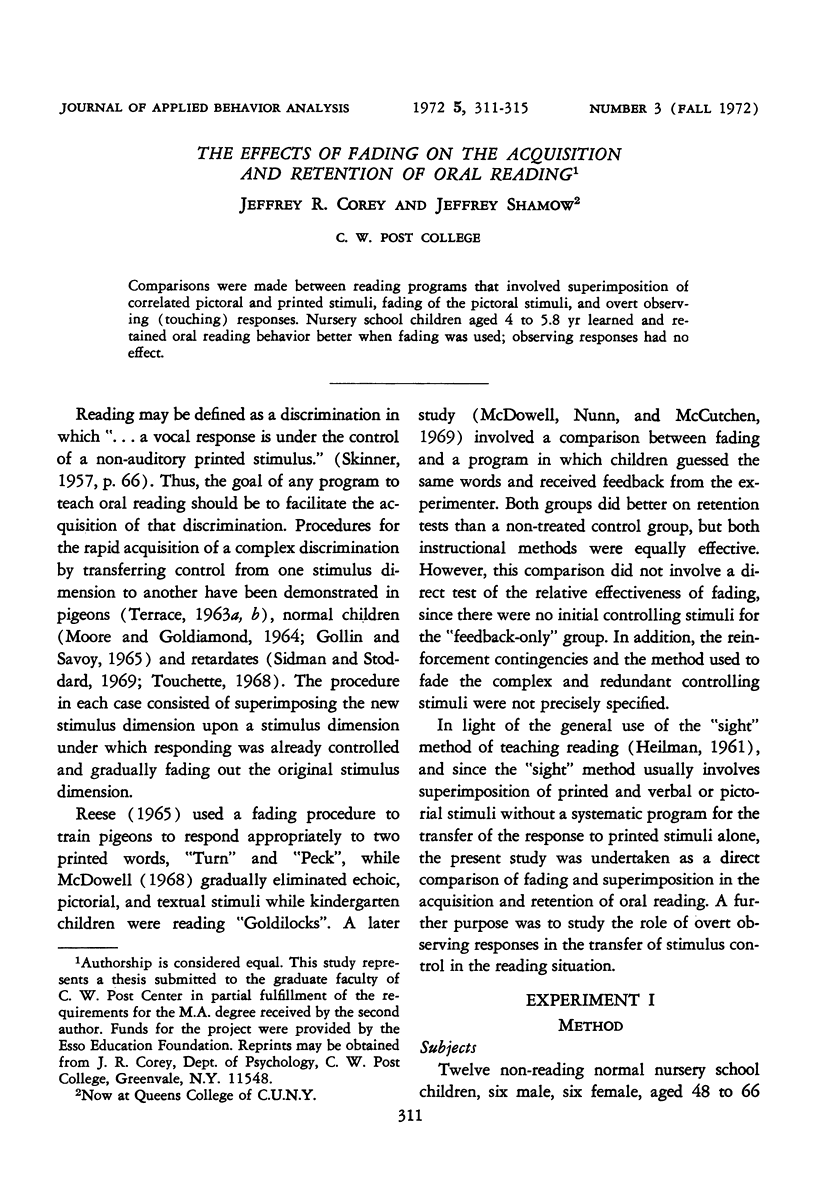
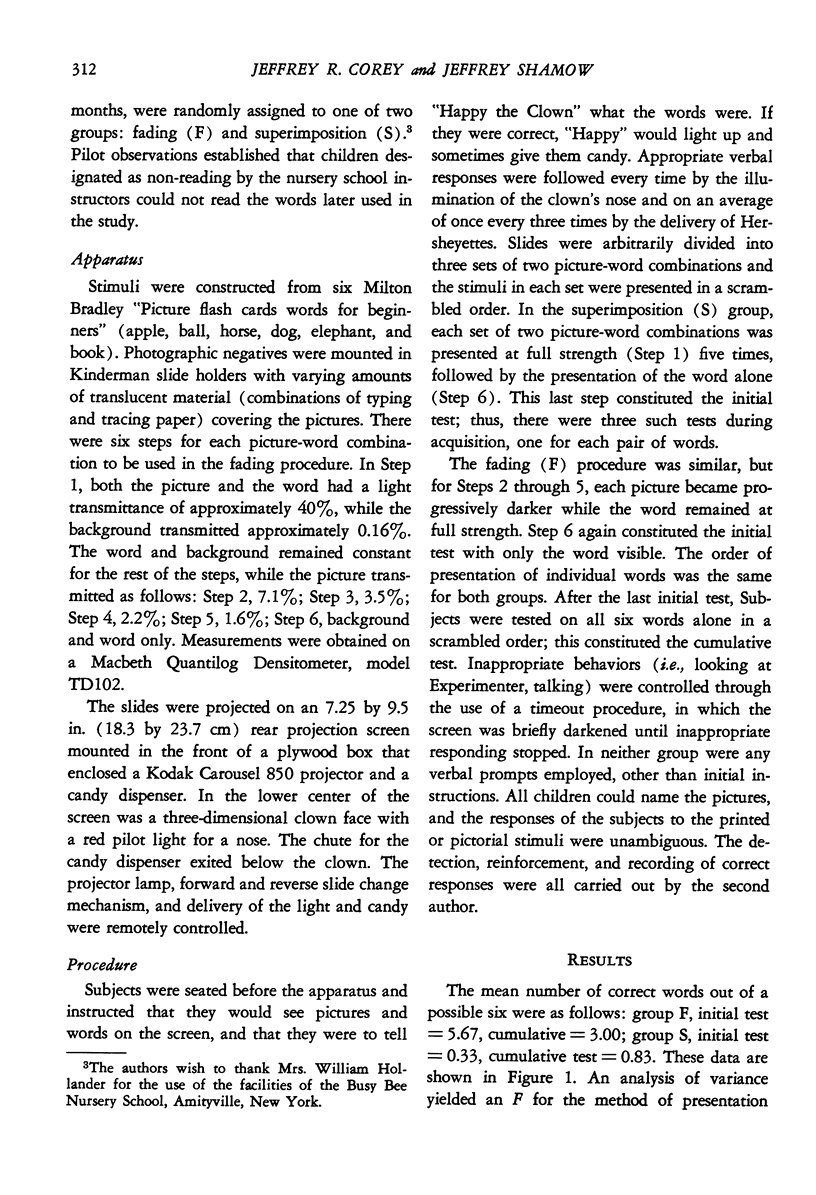
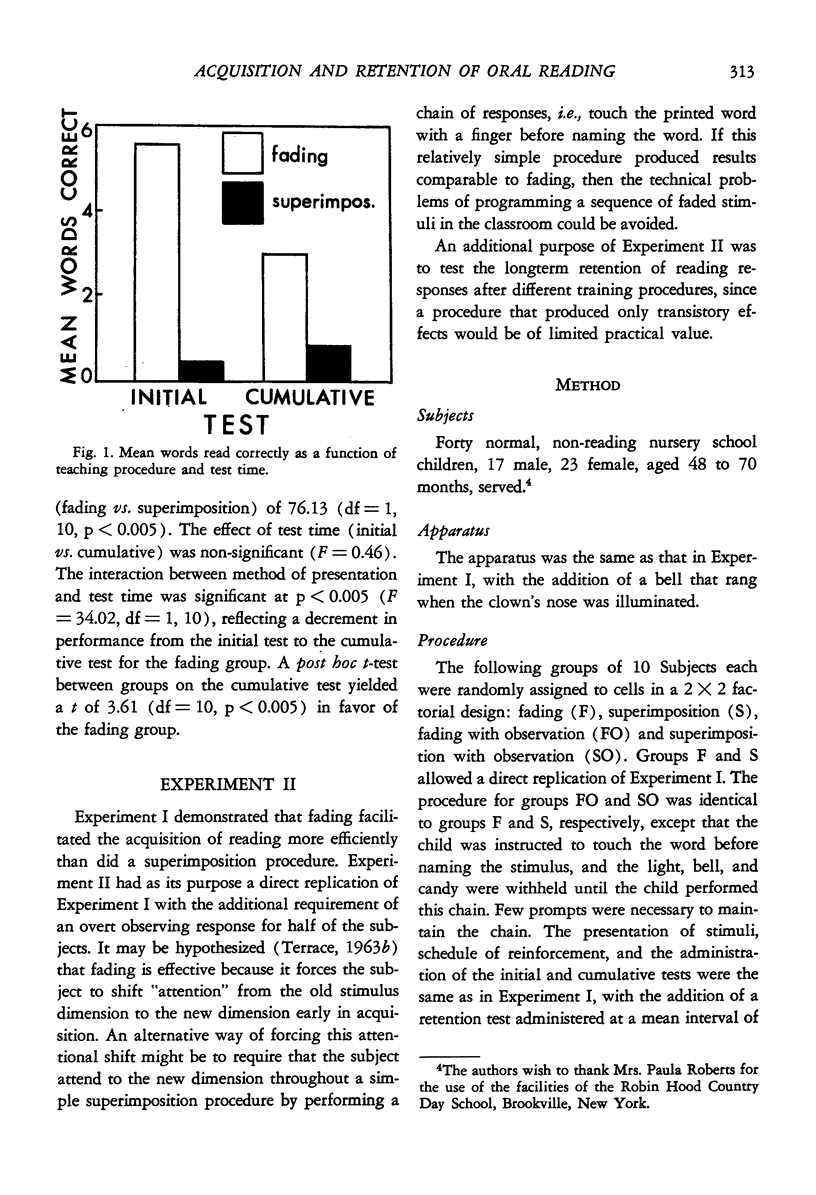
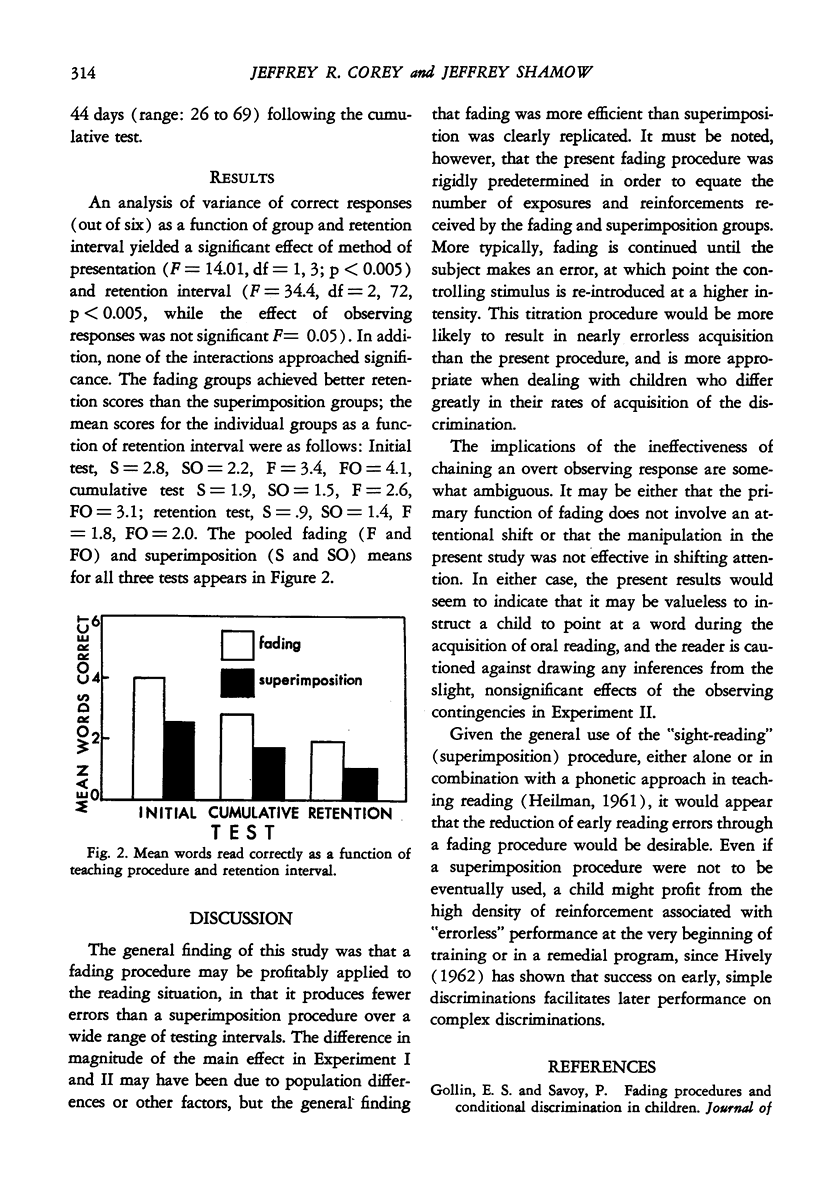
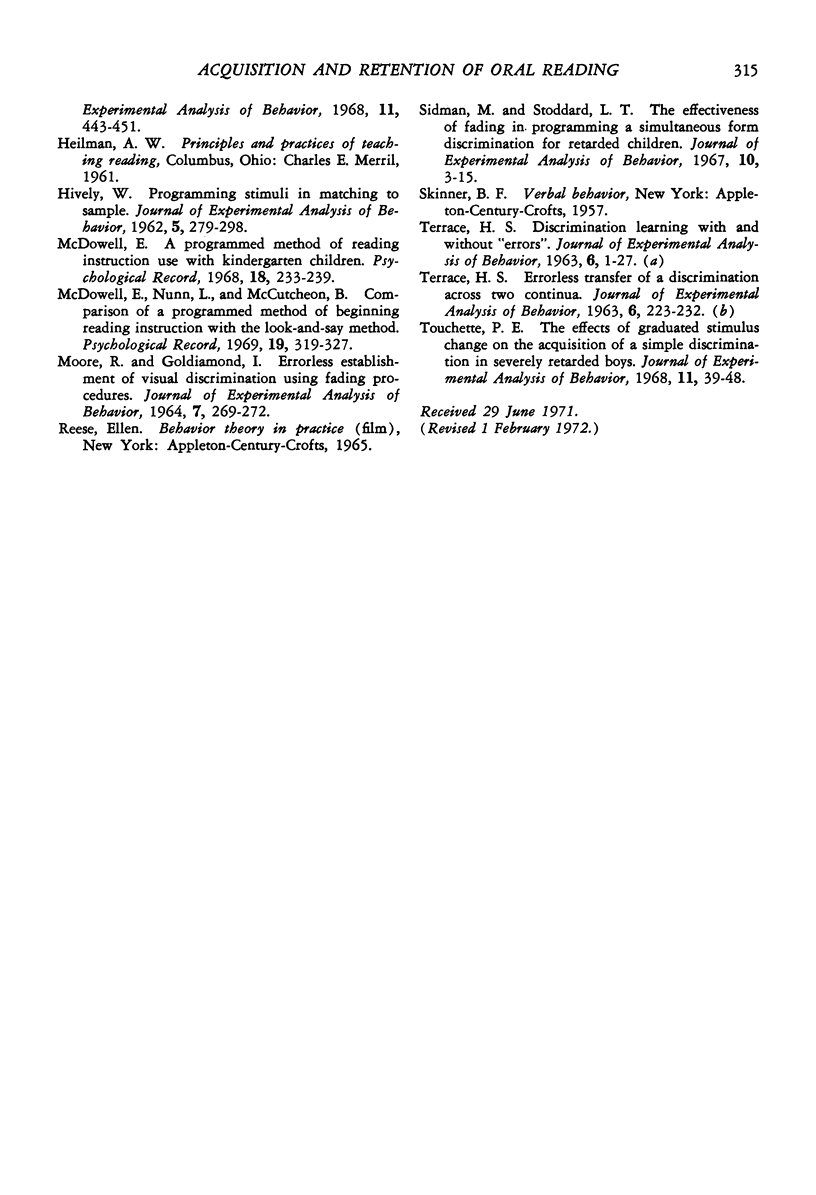
Selected References
These references are in PubMed. This may not be the complete list of references from this article.
- HIVELY W. Programming stimuli in matching to sample. J Exp Anal Behav. 1962 Jul;5:279–298. doi: 10.1901/jeab.1962.5-279. [DOI] [PMC free article] [PubMed] [Google Scholar]
- MOORE R., GOLDIAMOND I. ERRORLESS ESTABLISHMENT OF VISUAL DISCRIMINATION USING FADING PROCEDURES. J Exp Anal Behav. 1964 May;7:269–272. doi: 10.1901/jeab.1964.7-269. [DOI] [PMC free article] [PubMed] [Google Scholar]
- Sidman M., Stoddard L. T. The effectiveness of fading in programming a simultaneous form discrimination for retarded children. J Exp Anal Behav. 1967 Jan;10(1):3–15. doi: 10.1901/jeab.1967.10-3. [DOI] [PMC free article] [PubMed] [Google Scholar]
- TERRACE H. S. Discrimination learning with and without "errors". J Exp Anal Behav. 1963 Jan;6:1–27. doi: 10.1901/jeab.1963.6-1. [DOI] [PMC free article] [PubMed] [Google Scholar]
- TERRACE H. S. Errorless transfer of a discrimination across two continua. J Exp Anal Behav. 1963 Apr;6:223–232. doi: 10.1901/jeab.1963.6-223. [DOI] [PMC free article] [PubMed] [Google Scholar]
- Touchette P. E. The effects of graduated stimulus change on the acquisition of a simple discrimination in severely retarded boys. J Exp Anal Behav. 1968 Jan;11(1):39–48. doi: 10.1901/jeab.1968.11-39. [DOI] [PMC free article] [PubMed] [Google Scholar]


